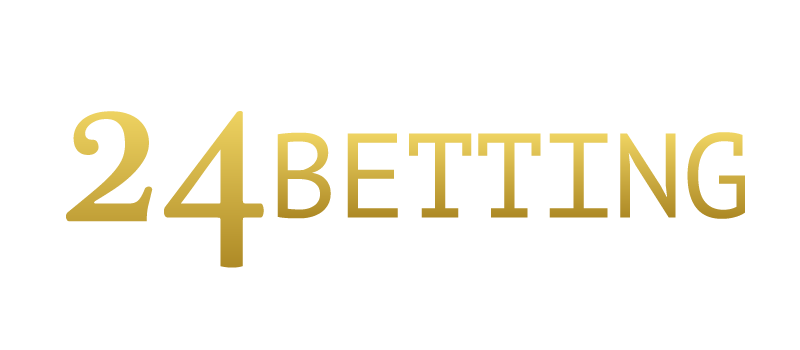Can You Win with 15-24 in Sports Betting?
The Allure and Risk of Longshot Bets
Sports betting is a realm of calculated risks, and few bets offer the tantalizing potential reward – and the significant risk – of those with odds between 15-24. These represent longshots, events considered unlikely by bookmakers. Understanding these odds is crucial, as they dictate the payout relative to your stake. For example, a 20-1 bet requires a 2000 in profit (plus your original stake). However, the implied probability of winning is low, making consistent success challenging. Many new bettors are drawn to 24 Betting sites hoping to strike it rich with these high-risk, high-reward opportunities.
Understanding Implied Probability & Why These Odds Exist
Odds are more than just numbers; they represent the bookmaker’s assessment of an event’s likelihood. Odds of 15-24 translate to an implied probability of roughly 4-6.25%. This means the bookmaker believes the event has a low chance of occurring. These odds exist because of a combination of factors: the perceived skill gap, team form, home advantage, and various other statistical considerations. They aren't arbitrary; they are built on complex algorithms and expert analysis.
Article Scope: Examining Profitability & Strategies
This article delves into the world of 15-24 odds, exploring whether consistent profitability is achievable. We'll examine the underlying mathematics, common strategies, potential pitfalls, and resources available to help you make informed betting decisions. We’ll also touch on current events like the ipl 2024 schedule players list and how understanding player form can influence betting choices.
Deciphering 15-24 Odds – What Do They Really Mean?
Converting Decimal, Fractional & American Odds to Understand Payouts
Different regions employ different odds formats. Decimal odds (e.g., 16.00) are common in Europe, fractional odds (e.g., 15/1) in the UK, and American odds (e.g., +1500) in the US. Understanding how to convert between these formats is essential to compare value across different bookmakers. Each format represents the same underlying probability but expresses it differently.
The House Edge and Its Impact on Longshot Returns
Bookmakers build in a ‘house edge’ – a commission – into their odds. This ensures they remain profitable in the long run. The higher the odds, the larger the house edge tends to be. While a longshot win feels fantastic, the payout will always be slightly less than the true probability suggests due to this built-in margin. This is why a sustainable strategy is vital, and why simply hoping for a lucky break with 24 betting log in isn't enough.
Real-World Examples: Breaking Down a 20-1 Bet
Let's say you bet 1000 (20 x 50 stake, for a total of ⚠formula incomplete
Why Bettors Consider 15-24 Odds
The Appeal of High Potential Payouts – “Dream Big” Mentality
The primary draw of longshot bets is the potential for a substantial return on a small stake. The allure of turning 200 or more is incredibly tempting. This dream big mentality often drives bettors to take risks they might not otherwise consider.
Hedging Strategies & Smaller Stake Opportunities
Longshot bets can be incorporated into hedging strategies. For instance, if you've placed a larger bet on a favorite, a small longshot bet on the underdog can provide a safety net. The smaller stake associated with longshots also minimizes potential losses.
Identifying Possible Value in Overlooked Markets
Sometimes, bookmakers may underestimate the probability of an event, creating ‘value’ for astute bettors. This often occurs in niche sports or when key information is overlooked.
Sports Where 15-24 Odds Can Be More Lucrative
Upset Potential in Soccer – Analyzing Lower-Ranked Teams
Soccer is renowned for its unpredictability. Lower-ranked teams can often cause upsets, especially in cup competitions or when facing fatigued opponents. Thorough analysis of team form, injuries, and tactical matchups is key.
Boxing/MMA – The Power of a Single Punch & Risk Analysis
In combat sports, a single punch or well-timed takedown can change the outcome of a fight. Longshot odds on underdogs can be appealing, but a careful assessment of fighting styles and risk tolerance is crucial.
Motorsports – Analyzing Driver/Team Performance & Circumstances
Motorsports are influenced by factors beyond driver skill, such as car performance, weather conditions, and pit stop strategy. Unexpected events can create opportunities for longshot winners.
Golf – Longshot Winners & Course/Form Considerations
Golf frequently sees unexpected winners. Players in good form who suit a particular course can offer value at long odds.
Other Niche Sports – Opportunities for Specialist Knowledge
Niche sports often present opportunities for those with specialist knowledge to identify value where bookmakers lack expertise.
Strategies for Identifying Winning 15-24 Bets
Deep Dive Analysis: Beyond the Surface Level Statistics
Successful longshot betting requires more than just glancing at surface-level statistics. Consider advanced metrics, historical data, and qualitative factors like team morale and motivation.
Finding Value Discrepancies: Bookmaker Errors & Market Mispricing
Bookmakers aren't infallible. Errors can occur, and market mispricing can create opportunities for savvy bettors. Comparing odds across different bookmakers is crucial.
The Importance of Bankroll Management for Longshots
Given the low probability of success, strict bankroll management is essential. Never wager a significant portion of your bankroll on a single longshot bet.
Utilizing Advanced Metrics & Data Analytics
In sports where data is readily available, utilizing advanced metrics can provide a competitive edge.
News & Injury Reports: Exploiting Last-Minute Information
Late-breaking news, such as key injuries or tactical changes, can significantly impact the outcome of an event.

Common Pitfalls to Avoid with Longshot Betting
The Gambler's Fallacy & Why Past Results Don't Guarantee Future Outcomes
The gambler's fallacy is the belief that past results influence future events. Each bet is independent, and past outcomes have no bearing on the probability of future success.
Emotional Betting & Chasing Losses
Emotional betting and chasing losses are common mistakes that can lead to poor decision-making. Stick to your strategy and avoid impulsive bets.
Overlooking Key Factors & Focusing Solely on the Odds
Don't be swayed solely by the attractive odds. Consider all relevant factors before placing a bet.
Falling for Hype & Public Perception
Public perception can often be misleading. Do your own research and form your own opinions.
Tools & Resources for Research
Statistical Websites & Data Providers
Numerous websites provide detailed statistical data for various sports.
Sports News & Analysis Platforms
Stay informed about team news, injuries, and form through reputable sports news sources.
Online Betting Communities & Forums
Online communities can offer valuable insights, but be cautious and verify information before acting on it.

Case Studies: Successful 15-24 Bets
Analyzed Win: Identifying the Factors Behind a Longshot Success
A detailed analysis of a successful longshot bet should highlight the factors that contributed to the win, such as a key injury to an opponent or a tactical masterclass.
Analyzed Loss: Pinpointing the Mistakes & Lessons Learned
Examining unsuccessful bets is equally important. Identifying the mistakes made can help you refine your strategy and avoid repeating them.
Conclusion: Can You Consistently Win with 15-24 Odds?
Realistic Expectations & the Role of Luck
Consistent profitability with 15-24 odds is extremely difficult to achieve. Luck plays a significant role. Even with a sound strategy, variance is inevitable. Keep up to date with the ipl score table 2024 to understand team performance and potential upsets.
The Importance of Discipline & Strategy
Discipline and a well-defined strategy are essential for mitigating risk and maximizing potential returns.
Final Thoughts: Longshots as Part of a Diverse Betting Portfolio
Longshot bets should be viewed as a small part of a diverse betting portfolio, not as a primary source of income. They can add excitement and potential for significant gains, but should be approached with caution and a realistic understanding of the risks involved.


